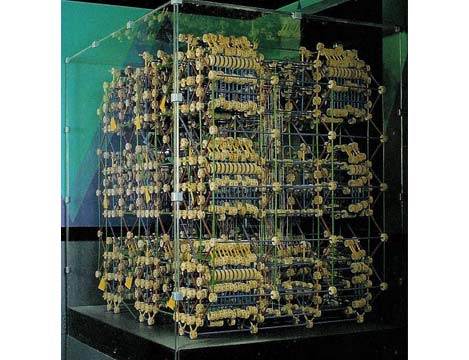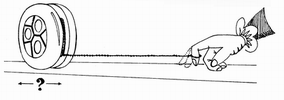| Colour images from 1978-9 to supplement this paper
|

| H.A. Cohen, Modelling Boolean Algebra with Tinkertoy or Meccano: How to Construct a NIM Playing Machine, in P.Williamson (Editor), Learn to Love Mathematics, Mathematics Association of Victoria, Melbourne, 1980, pp 253-265.
Download by clicking on PDF token to the left
|

The NIM Playing machine constructed out of Tinkertoy.
The player and the machine (aided by a human) make moves alternatively, dislodging 1, 2 or 3 tokens from the verucal stack.
Neither player nor the machine can cheat.
But which one will win?
Making the player's move -- David can stroke to remove 1, 2 ,or 3 orange plastic pieces from the stack.
The machine's (human) slave will then make a complete stroke with the machine's input arm,
and using wooden logic the machine removes the (legal) number of pieces it deems appropriate.
The Overlord of the system decides just which of player or machine makes the first move.
TheOverlord then reloads the stack with an arbitary (or is it ) number of pieces.
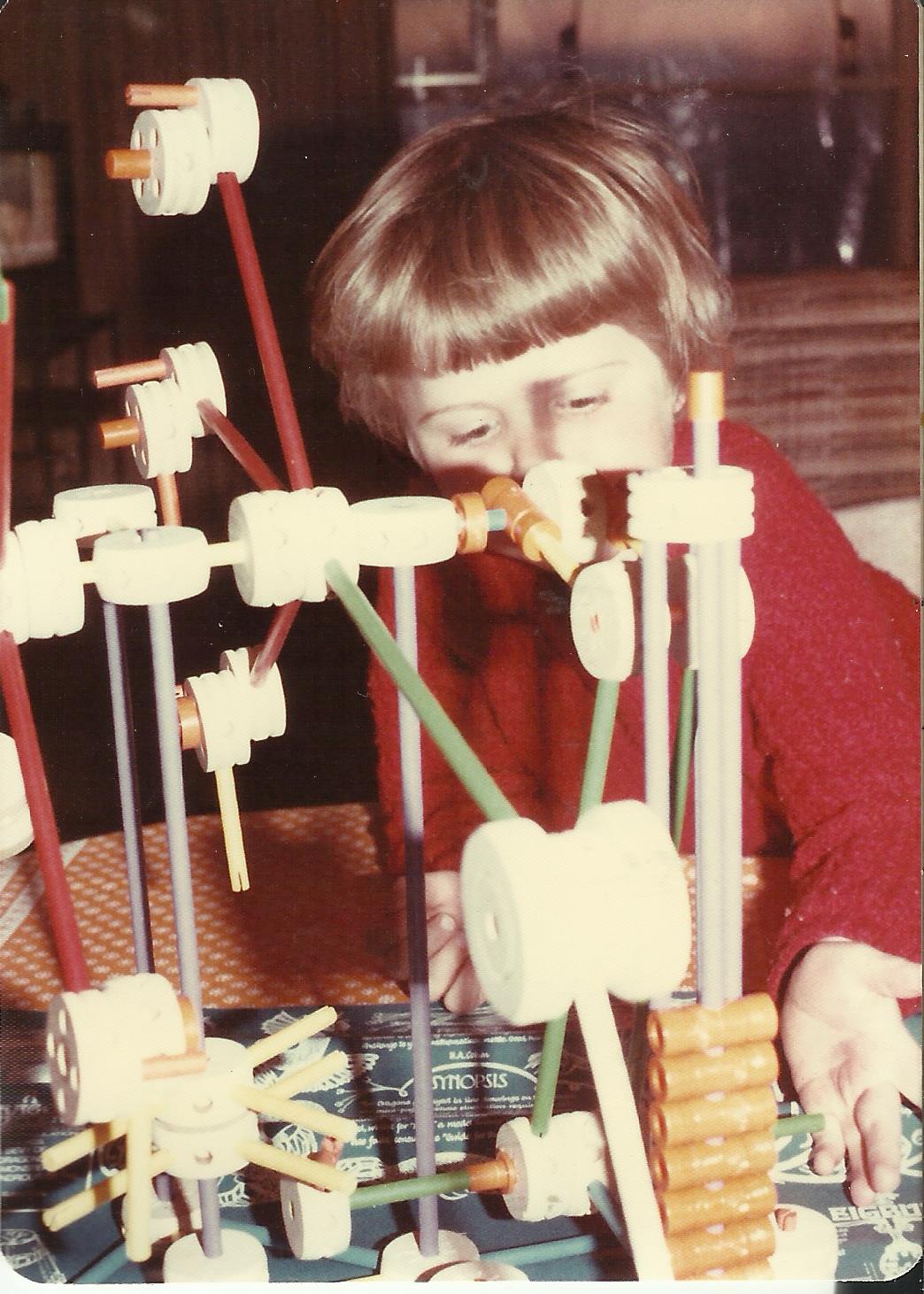
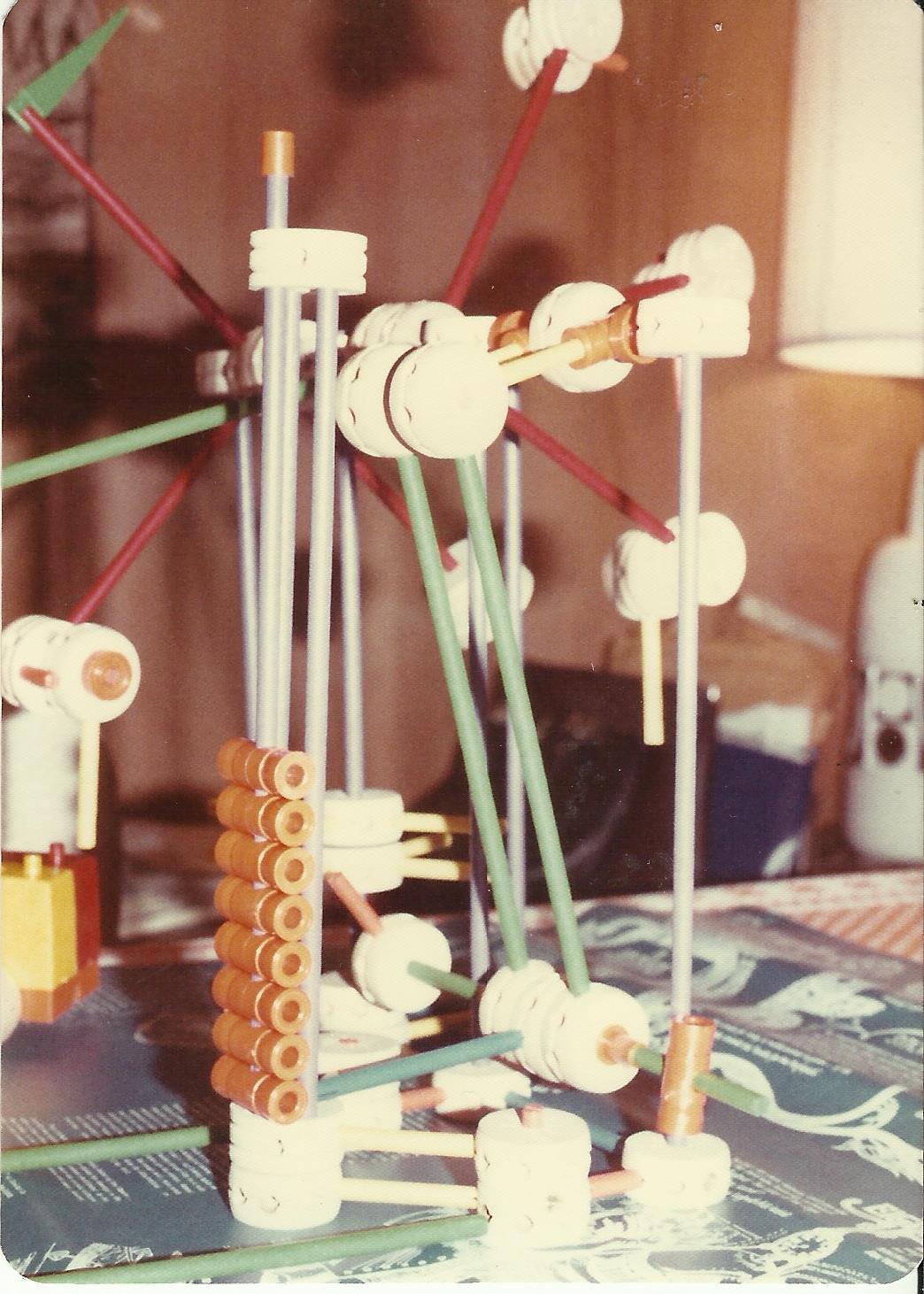
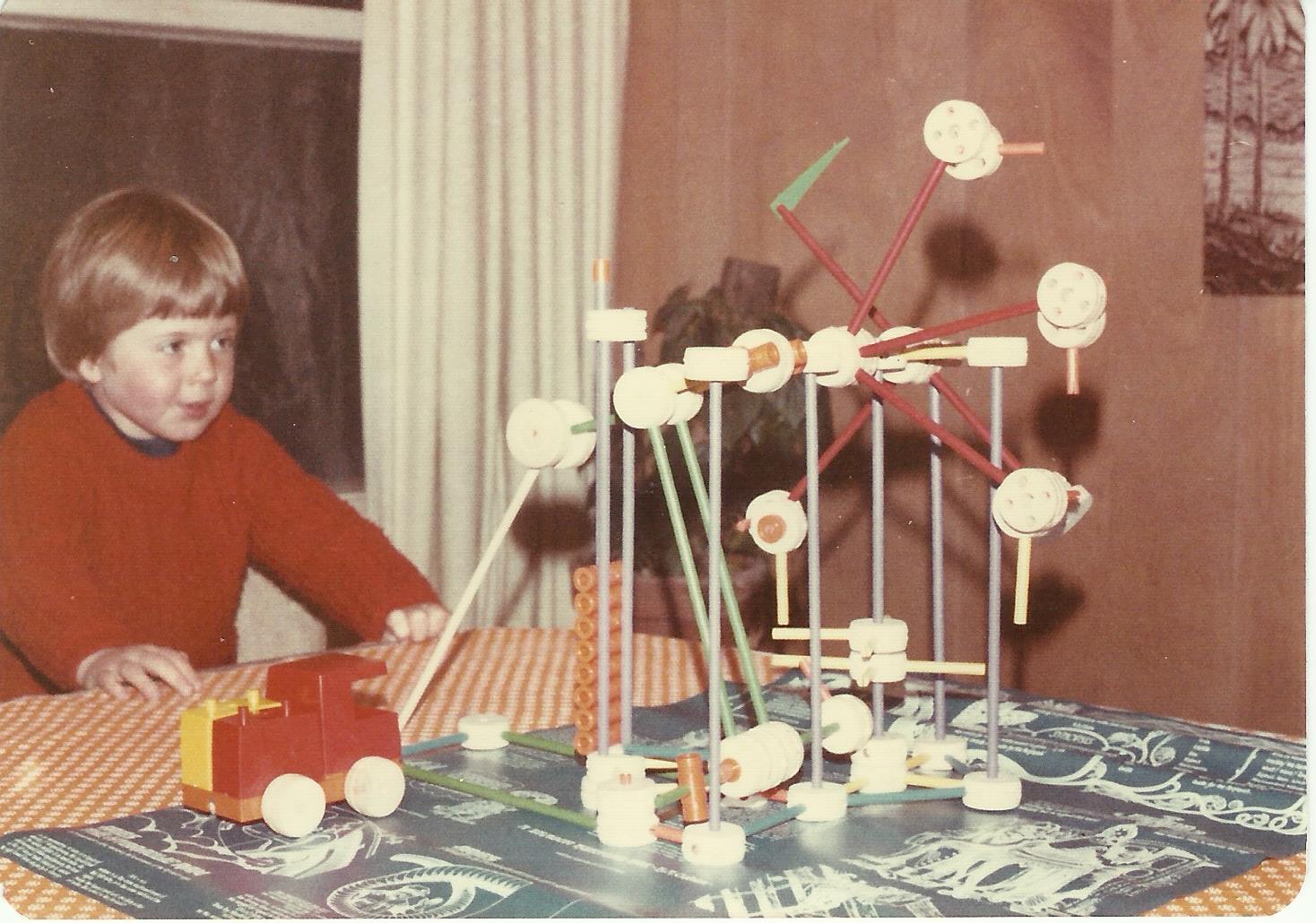
This devise is really a special purpose computer. A far more impressive wooden computer - developed at about the same time -
is the Tic-Tac-Toe Playing Machine described at the bottomof this web page.
|
Related Papers on Introducing Number and Computer Concepts in Primary School
| |
| H.A. Cohen, Making Algebra Concrete using a Microcomputer: An Algebraic Programming Language for the Control of Robots, in P. Williamson (Editor), Learn to Love Mathematics, Mathematics Association of Victoria, Melbourne, 1980, pp 336-350.
Download by clicking on PDF token to the left |

| H.A. Cohen, Modelling Boolean Algebra with Tinkertoy or Meccano: How to Construct a NIM Playing Machine, in P.Williamson (Editor), Learn to Love Mathematics, Mathematics Association of Victoria, Melbourne, 1980, pp 253-265.
Download by clicking on PDF token to the left |

| H.A. Cohen, Expanding the Child's Concept of Number, Space and Operation, in M. Poole (Editor),
From Creativity to Curriculum, Allen and Unwin, Sydney, 1980, pp 147-162. Download by clicking on PDF token to the left
|




